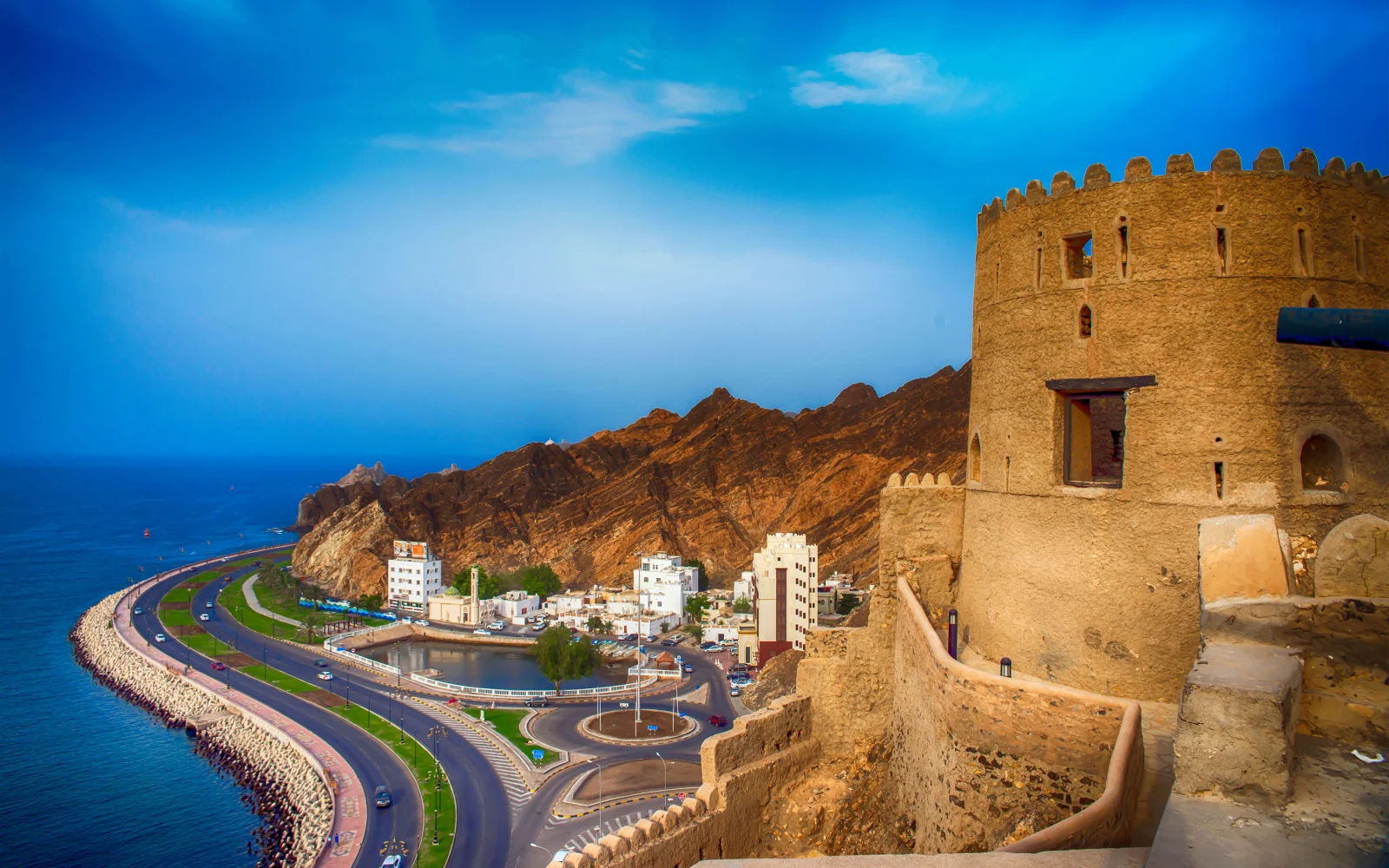What's the best time to visit Oman?
The best time to visit Oman is from November to March, offering ideal weather for exploring and enjoying the outdoors. This period aligns with vibrant cultural festivals like Muscat Nights and the Sultan’s Camel Race Cup, showcasing Oman’s rich traditions. With pleasant temperatures and clear waters, it’s perfect for hiking, diving, and experiencing local customs.
Oman is a unique holiday destination in the Middle East. It is becoming more and more popular with visitors thanks to its stark natural landscapes, thousands of years of rich history, and relative security compared to the rest of the region.
The Daymaniyat Islands are home to beautiful, secluded beaches and plenty of wildlife, making the archipelago a diver’s paradise. But while this storied country is rich in history, culture, and amazing food, when is the best time to visit Oman? Here’s our take.
The Overall Best Time to Visit Oman
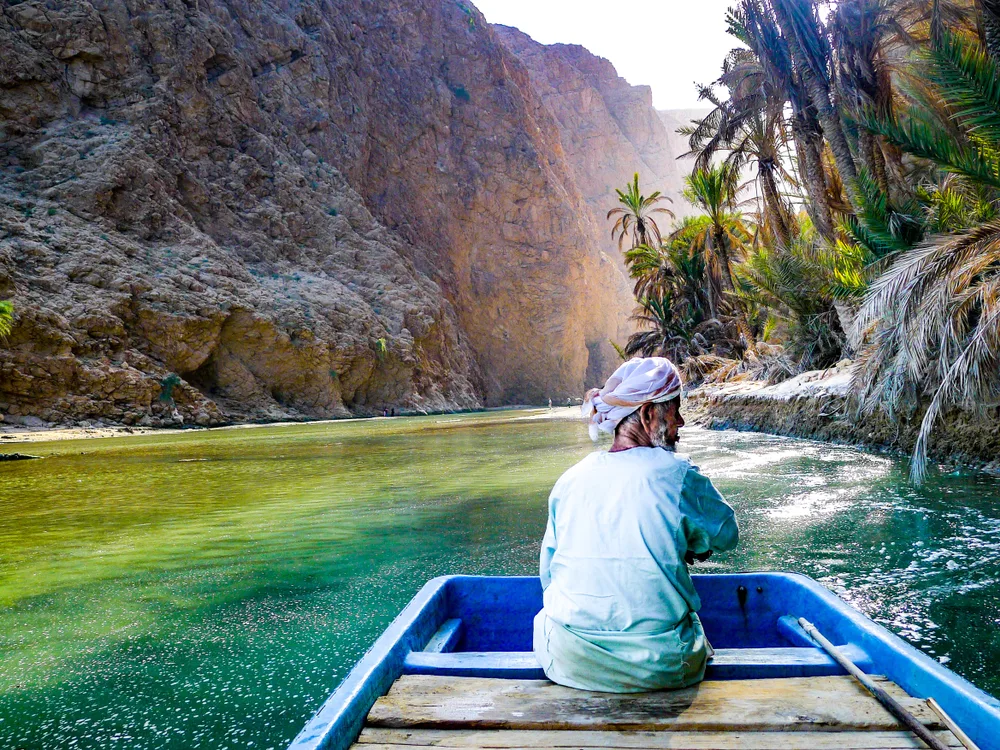
Wadi Shab, Oman – Jan 2012: An old Omani man steers a boat across the shallow green water at the entrance to Wadi Shab, a beautiful scenic canyon near Muscat in Oman/Kylie Nicholson/Shutterstock
The best time to visit Oman is between November and March. Late fall, winter, and early spring bring warm yet pleasant weather, perfect for exploring the country. The country is also at its liveliest around this time.
The primary reason this is the best time to visit Oman is the weather. In both the drier north and the wetter south, the weather in the winter is generally pleasant.
In the capital, Muscat, the average high temperature in November is a comfortable 81 degrees Fahrenheit, with a low level of humidity. This high temperature is similar to what you would expect elsewhere in the country, not just in Muscat.
Although the weather is warm, and even hot, it is not unbearable. You can explore the outdoors on a hike without endangering your health and visit the beautiful beaches.
Visiting during this time is ideal if you want to spend a lot of time in the water. Oman is a popular destination for a swimming holiday, and most tour group operators operate the most deals during the winter months.
Winter is also the best for other water sports, especially diving. According to the Professional Association of Diving Instructors, the best time to go diving is between October and May. The water is still warm, but cooler than in the summer, making it more pleasant to dive.
Summer monsoons drop a lot of rain in the water and can make visibility worse. In October, you’ll also get a chance to see the migration of whale sharks and other marine species.
The winter is also the best time to visit Oman to get a taste of the local culture. Many popular festivals and holidays happen during this time.
Locals take advantage of the cooler weather, when it is much more bearable to be outdoors, to participate in traditional customs such as camel racing. If you want to catch one of the country’s festivals, which are growing in international renown, winter is the best time to come.
Popular events include:
- Muscat Nights Festival (January-February)
- Tour of Oman road cycling race (February)
- Sultan’s Camel Race Cup (March)
- Oman National Day (November)
Cheapest Time to Visit Oman
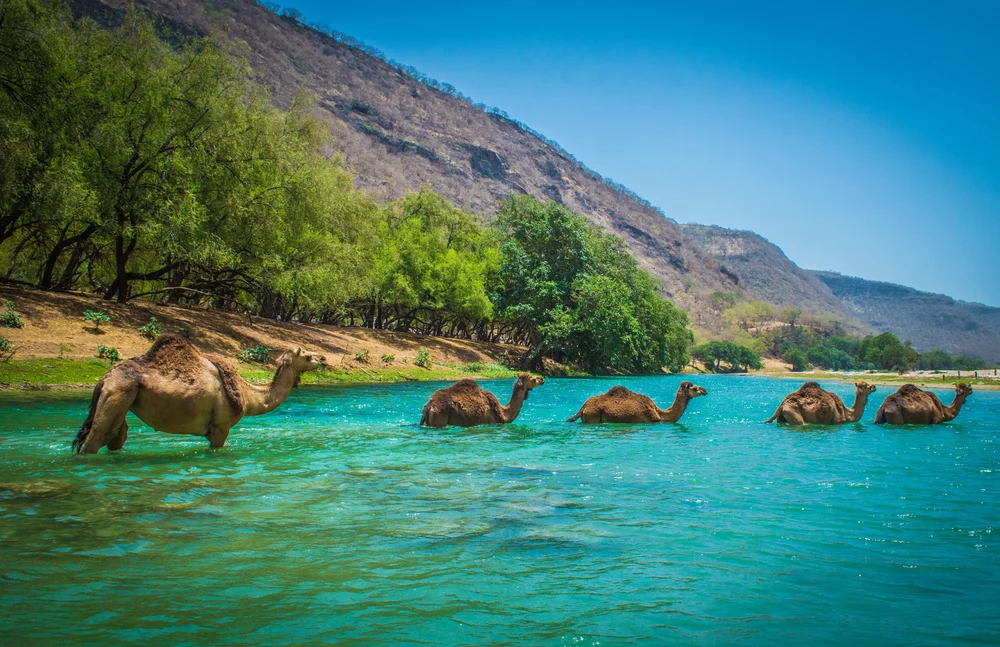
Gregory Zamell/Shutterstock
The cheapest time to visit Oman is during the off-season, which is the summer. During June, July, and August, the price of coastal hotels and resorts is much lower than during the high season. However, saving money comes with a tradeoff.
Not many visitors come to Oman during the summer because of the high heat. The very hot weather makes it difficult to do a lot of exploring.
However, if all you want to do is lounge by the beach, then summer is a great time to visit because many resorts that are fairly expensive during the high season slash their prices during this time since there isn’t much tourist demand.
Hotels also tend to offer additional deals during the summer to try and entice visitors during a time when they’re not making much money. Shop around different resorts and see if they are offering specials such as discounts for multi-day stays.
Besides accommodation, flights also tend to be cheaper to Oman during this time since there isn’t as much demand.
However, if you have to connect through a regional hub such as Dubai, your flight may be more expensive during heavy travel days. Use a flight comparison tool such as Skyscanner to plan your trip for days when a visit would be the cheapest.
Least Busy Time to Visit Oman
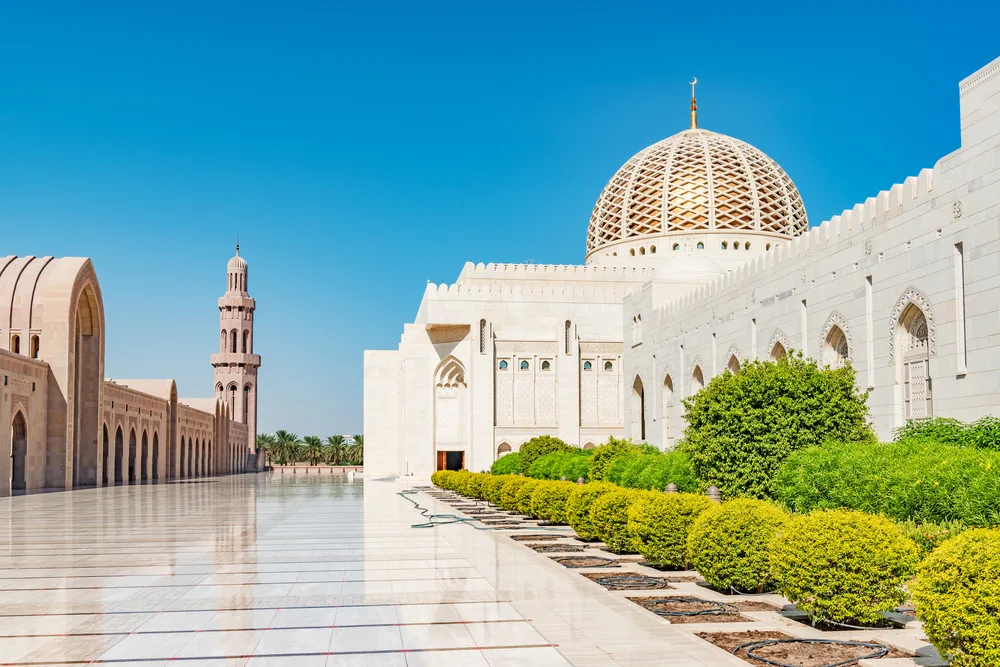
Hamdan Yoshida/Shutterstock
The least busy time to visit Oman is during the summer months of June, July, and August. These months are the least expensive precisely because there are no visitors, and hotel owners slash prices.
However, for many people, traveling to Oman during this time isn’t worth it because of the heat. There certainly aren’t a lot of visitors during the summer, as many get scared off by the high heat.
Chances are, you’ll also see fewer locals around since they prefer to stay inside where there is air conditioning. The exception to this rule is the southern city of Salalah. Salalah and its surrounding region has a very different climate from the hotter, drier regions to the north.
It experiences monsoons, called khareef season by the locals, due to its location on the Indian Ocean. However, monsoons in Salalah are very different from what they are like in South or Southeast Asia.
Instead of devastating storms that can bring deadly flooding, khareef season in Salalah brings steady rain and mist to the region. This creates a gentle climate that is hot, but not nearly as hot as the rest of the region, and wet. The hills and valleys around Salalah come alive with greenery during this time.
Thanks to the unique khareef, Salalah is actually the most crowded during the summer. Visitors from other parts of the country and the Arabian Gulf come here to escape from the oppressive heat that characterizes summer in the rest of the region.
If you want to visit Salalah but avoid the crowds, visit during the shoulder season. Even during the high season, Oman is not very crowded. During 2018 and 2019, the country received just under 4 million tourists all year round.
It’s fairly easy to avoid crowds and still have an authentic experience, no matter what time of the year you are visiting. Unless you are visiting a local festival, you are not likely to encounter crowds (and even crowds in Oman are more manageable than more expensive tourist destinations).
Worst Time to Visit Oman
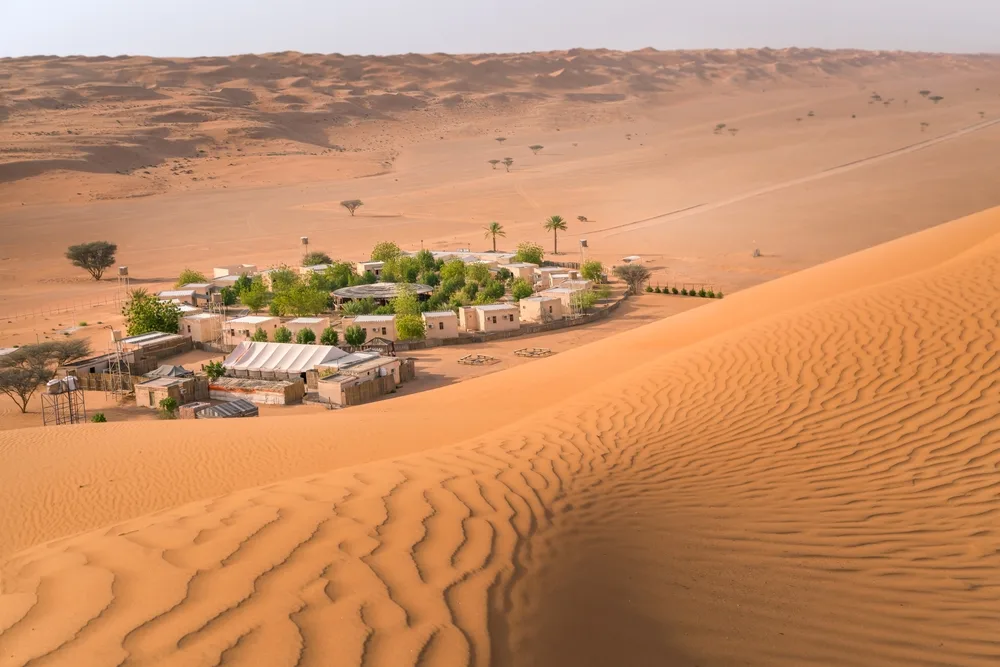
Petr Kahanek/Shutterstock
The worst time to visit Oman is during the summer, which includes June, July, and August. The oppressive heat makes it difficult to do anything, when much of the charm of Oman is getting to explore the beautiful landscape.
The more affordable prices and fewer crowds of the summer are just not worth it when it comes to visiting Oman as these months are unbearably hot. Daily temperatures regularly reach over 100 degrees Fahrenheit.
The high humidity in coastal regions makes it even hotter. You can theoretically visit during the heat and just spend your time lounging by the hotel pool or inside air-conditioned buildings.
However, it isn’t worth going all the way to Oman and not making the most of the country. Plus, the heat is so high that even normal hot weather activities, such as swimming, become dangerous due to the risk of dehydration, sunburn, and heatstroke.
If you visit during the shoulder season months, such as April, May, or September, it’s a bit of a compromise. Prices are warmer and the weather is hotter than in the winter, but it isn’t quite as oppressive as the hottest days of the summer.
Spring can also get very hot, but it isn’t as oppressive as the summer. It is also greener than during the winter.
If you are visiting during the spring, balance out time on the beach with time in the mountains, where the weather is cooler and you can check out the rose-blooming season on Jebel Akhdar, one of Oman’s finest handicrafts.
The late days of summer and early days of fall are very hot, but they also offer some unique opportunities for nature lovers. In September, you can visit turtles nesting at the Ras Al-Had Turtle Reserve. During this season, the turtles hatch and migrate to the sea, an awe-inspiring sight.
Oman by Month: Climate & Activities
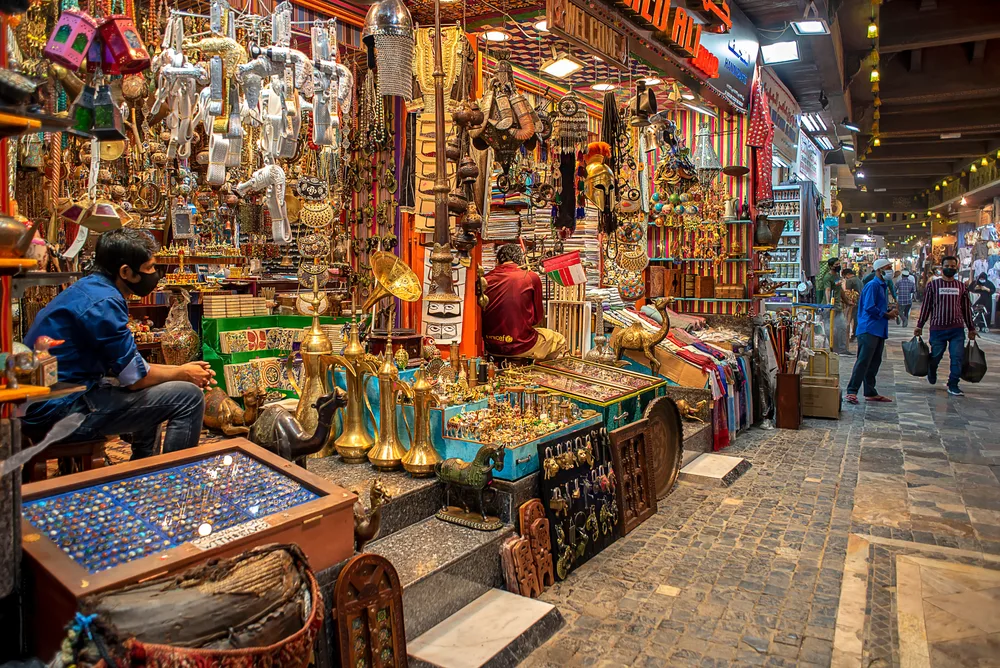
Muscat,Oman – 02-02-2021 : Antique goods Shop in Muttrah souq in Muscat, Oman, biggest traditional antique market in sultanate of Oman/Jahidul-hasan/Shutterstock
Still unsure about the best time to visit Oman? Take a look at our summary of the weather and climate by month below:
January
Winter temperatures in Oman range from 15 to 25°C (59-77°F). It’s an ideal time for exploring historic sites like Nizwa Fort, trekking in the Al Hajar Mountains, and enjoying the coastline in Muscat.
February
Similar to January, February maintains mild temperatures between 15 to 25°C (59-77°F). Visitors can experience the Muscat Festival, explore the Wahiba Sands desert, and engage in water activities along the coastline.
March
As spring begins, temperatures range from 17 to 28°C (63-82°F). March is perfect for visiting the ancient city of Bahla, exploring the Jebel Akhdar mountain range, and enjoying the cultural events in Muscat.
April
Spring temperatures in Oman range from 20 to 32°C (68-90°F). It’s an ideal time for camel trekking in the Empty Quarter desert, experiencing the beauty of Wadi Shab, and enjoying water sports in coastal areas.
May
May sees temperatures ranging from 24 to 36°C (75-97°F). It’s a great month for exploring the historic town of Sur, relaxing on the beaches of Salalah, and experiencing the unique Khareef (monsoon) season in Dhofar.
June
Summer arrives in Oman with temperatures between 27 to 38°C (81-100°F). June offers opportunities for turtle watching in Ras Al Jinz, exploring the ancient city of Samharam, and experiencing the Khareef season in Salalah.
July
July maintains hot temperatures from 29 to 39°C (84-102°F). It’s a popular month for diving in the Daymaniyat Islands, exploring the city of Sohar, and enjoying traditional Omani cuisine.
August
Temperatures in August range from 29 to 39°C (84-102°F). Despite the heat, it’s an excellent time for exploring the Frankincense Trail, visiting the ancient city of Ibra, and experiencing the vibrant markets in Nizwa.
September
As fall begins, temperatures range from 26 to 36°C (79-97°F). September offers a pleasant transition, with opportunities for mountain biking in the Al Hajar Mountains, exploring the town of Rustaq, and enjoying traditional music festivals.
October
In October, Oman sees temperatures ranging from 23 to 34°C (73-93°F). It’s a great month for hiking in the Jebel Shams mountains, visiting the historic Bahla Fort, and enjoying outdoor activities in the cooler weather.
November
Fall temperatures range from 19 to 30°C (66-86°F). November is perfect for exploring the UNESCO-listed city of Ibri, attending the Muscat International Film Festival, and enjoying outdoor adventures in the cooler climate.
December
Winter returns in December with temperatures ranging from 16 to 26°C (61-79°F). This month brings opportunities for camping in the Wahiba Sands, exploring the ancient city of Nizwa, and enjoying the festive atmosphere in Muscat.
Frequently Asked Questions
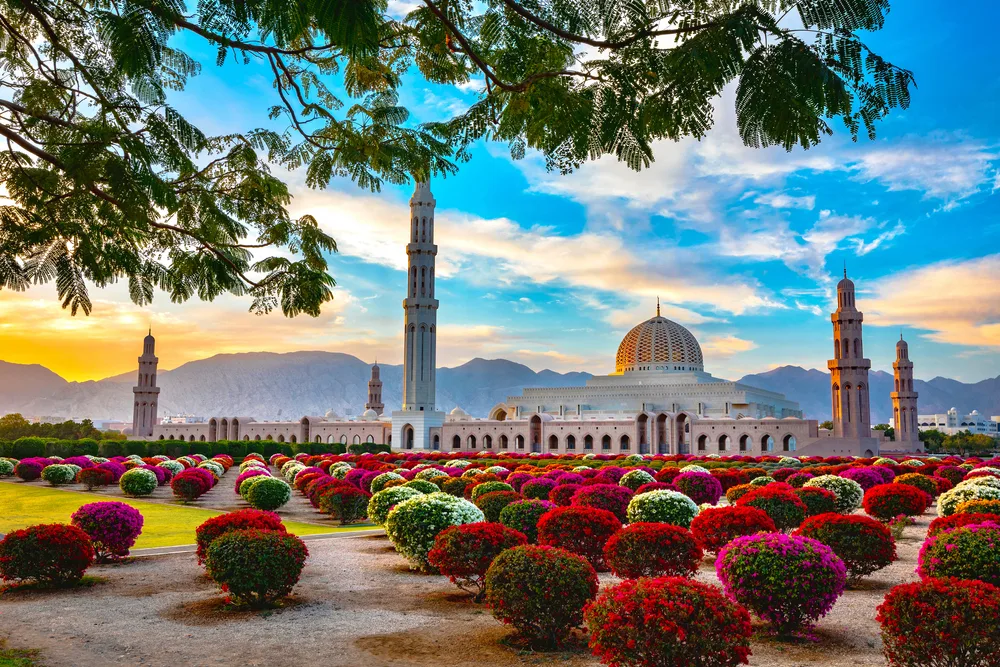
Djay7/Shutterstock
Here are a few other questions people tend to ask while planning their trip to Oman:
Which month is best to visit Muscat?
Any winter month is a good time to visit Muscat. Your main concern is the weather. During the winter, the weather is warm but not hot, and the humidity is low enough that walking around the city is comfortable.
How many days do you need in Oman?
You should spend about 10 days in Oman. The country is bigger than it looks, and you will need this many days if you want to explore the interior as well as the capital and coast.
Is Oman expensive?
Oman is fairly expensive, especially when it comes to flights and accommodation. Prices go down in the summer, but it’s not worth traveling then to save money due to the heat.
Is there a rainy season in Oman?
Only southern Oman experiences a true rainy season. There, the rainy khareef season lasts from June to about September or October.
Which month has the best weather in Oman?
The months between November and March have the best weather in Oman. Winter brings cooler weather (although it is still hot enough to swim) and a long-awaited break from high humidity levels, especially in the capital Muscat.
So, What’s the Best Time to Visit Oman?
The weather is the most important factor when timing your visit to Oman. The best time to visit is during the winter, from November to March, when temperatures are warm but not oppressive.
While summer months are less crowded and less expensive, they are also much less pleasant to experience. So, with so much to see and do and plenty of amazing times to visit, what are you waiting for — book your trip to Oman today!



